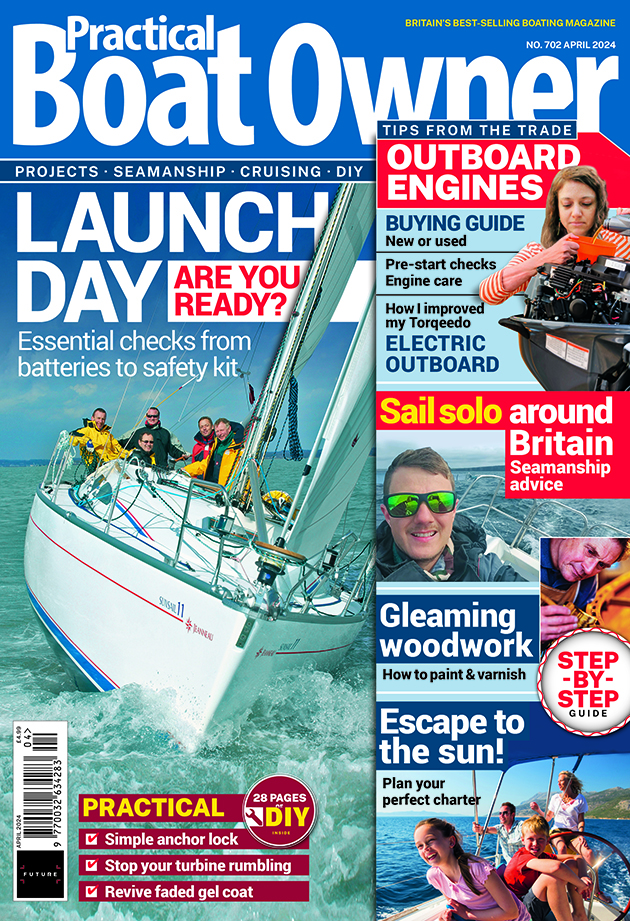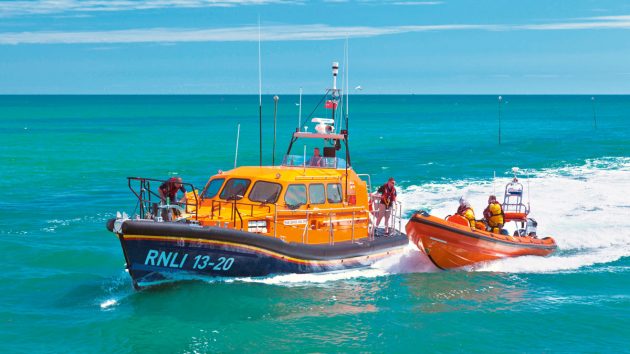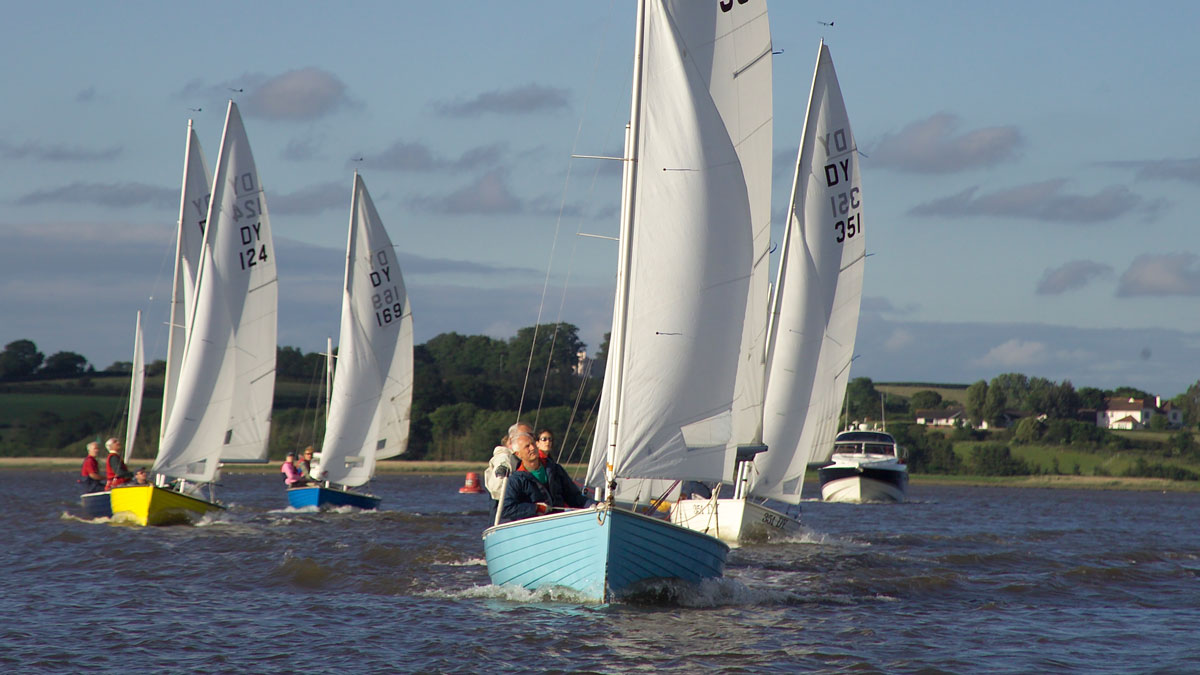The Royal National Lifeboat Institution marks its bicentenary this year. Katy Stickland looks back at its formation and development
“Every stranger, whom the disasters of the sea may cast on her shores, should never look for refuge in vain,” wrote the retired British militia officer, Sir William Hillary.
Having witnessed numerous shipwrecks off his home town of Douglas in the Isle of Man, and seen islanders risk their lives to save others, he now had one wish: to create a nationwide lifesaving institution.
He was writing in his 1823 pamphlet, An Appeal To The British Nation On The Humanity And Policy Of Forming A National Institution For The Preservation Of Lives And Property From Shipwreck, which detailed how a lifeboat service manned by trained, volunteer crew could be run.

The newest all-weather Shannon Class lifeboat (above) is a long way from the early oar-powered vessels, like the Lytham Lifeboat, Charles Biggs. Credit: RNLI
The Admiralty showed little interest. Instead, Sir William turned to the more philanthropic members of London society.
At a meeting in the City of London Tavern on 4 March 1824, over 30 prominent men agreed to form The Royal National Institution for the Preservation of Life from Shipwreck.
By 1854, the name had changed to the Royal National Lifeboat Institution – or RNLI for short.
The charity has changed dramatically from those early days, but the ethos – to save lives at sea regardless of how people get into difficulties – still remains.
RNLI volunteers have saved 146,277 lives over two centuries of lifesaving work.
RNLI 200: Getting established
Initially, The Royal National Institution for the Preservation of Life from Shipwreck worked in partnership with existing lifesaving organisations like the coastguard, whilst at the same time building its own lifeboat stations.
By 1825, the RNLI had commissioned 15 new lifeboats and established the first RNLI lifeboat stations at Bideford, Blyth, Boulmer, Bridlington, Brighton, Courtmacsherry, Douglas, Gibraltar Point, Boston Deeps, Newhaven, Penzance, Plymouth, Rossglass and Weymouth.

Before the tractor, horses were used to launch the lifeboat. The last launch by horse occurred in 1936. Credit: RNLI
In 2001, the first inland lifeboat station was opened – Enniskillen RNLI on Lough Erne in County Fermanagh.
Today the RNLI operates 238 stations around the coasts of the UK and Ireland.
RNLI 200: At its heart
The selflessness of RNLI volunteers has always been vital to the success of the service, and remains so today.
Sir William Hillary believed that “those who risked their own lives to save their fellow-creatures from the perils of shipwreck should be honoured and rewarded”.
The first recipient of the Gold Medal for Gallantry was Lymington Coastguard, Charles Fremantle.
On 8 March 1824, he swam through choppy seas with a shore line to the dismasted Swedish brig, Carl Jean at Whitepit near Christchurch, Dorset; the crew survived.

Grace Darling was the first woman to be awarded an RNLI medal. Credit: RNLI/Grace Darling Museum
But it was the daring actions of Grace Darling and her father, William, in the early hours of 7 September 1838 which really captured the public’s imagination.
William Darling was the lighthouse keeper at Longstone, one of the Farne Islands, and lived on site with his wife and children.
In the early hours of 7 September he spotted the wreck of the steamship Forfarshire which had hit the rocky island Big Harcar, breaking in two.
Grace and her father rowed a 21ft/6.4m Northumberland coble, helping to rescue the survivors. Both of them were awarded the Silver Medal for Bravery, and Grace, the first woman to receive an RNLI medal, became a reluctant national hero.

Elizabeth Hostvedt was the first woman qualified to command an RNLI inshore lifeboat. Credit: RNLI
Women did not become part of RNLI volunteer crews until 1969, however, when 18-year-old Norwegian student, Elizabeth Hostvedt, became the first woman qualified to command an RNLI inshore lifeboat at RNLI Atlantic College in Llantwit Major, South Wales.
There was some resistance to women becoming members of lifeboat crew, with doubts expressed over whether they’d have the strength to do things like pull heavy bodies from the water.
The introduction of inflatable inshore lifeboats to the fleet in the 1960s helped to overcome this.
But despite it taking 145 years for women to become crew, during the 19th century 19 medals for bravery were awarded to women who carried and out and assisted with rescues.

The first Lifeboat Saturday in Manchester. Credit: RNLI
Women did have active roles on land ranging from ‘lady launchers’, launching and recovering lifeboats, to fundraisers such as Marion Macara who helped to organise the first recorded charity street collection in Manchester in 1891.
Lifeboat Saturdays became annual events in Manchester and the movement spread, laying the foundations of the charity’s fundraising.
Marion also formed the first Ladies’ Guild and within 10 years more than 40 guilds had sprung up around the UK and Ireland; the RNLI’s income doubled.

Aileen Jones with her RNLI Medal of Gallantry. She remains an active member of Porthcawl RNLI and is the launch authority and tractor driver. Credit: RNLI
Today, women play a role in all aspects of the RNLI, including Aileen Jones from Porthcawl RNLI, the first female lifeboat crew member to receive an RNLI Medal of Gallantry in 2005, following the rescue of a fishing vessel in gale force winds and rough seas the previous year, and Di Bush at Harwich RNLI, who was the first woman in the charity’s history to hold the roles of full-time mechanic and full-time coxswain.
Figures from the RNLI show 97% of frontline lifesavers are volunteers.

Henry Blogg – the RNLI’s most decorated crew member. Credit: RNLI
Henry Blogg, who joined the Cromer lifeboat crew in Norfolk when he was 18, remains the most decorated RNLI crew member, having been awarded three Gold Medals and four Silver Medals for Gallantry; he retired in 1947 at the age of 71, after 53 years of service.
Safety at sea
Today, the RNLI works closely with its crew and partners to develop and test new rescue techniques and equipment, but the charity has always been at the cutting edge of safety technology.
In 1854, RNLI inspector Captain Ward designed a new cork lifejacket for crew. Its effectiveness was proved in February 1861, when the Whitby lifeboat capsized during a storm.

The crew of Whitby No1 lifeboat wearing cork lifejackets. Credit: RNLI
Only one member of the crew, Henry Freeman, survived because he was the sole crew member wearing the new cork lifejacket.
More buoyant Kapok lifejackets were introduced in 1904, remaining in use until the late 1960s when they were replaced by those made with synthetic foam.
From 1995, with the launch of the first RNLI Sea Safety campaign, educating the public about safety at sea has been a priority, both in the UK and abroad, where the RNLI works with the United Nations and other organisations to prevent drowning.
Continues below…
RNLI call outs to motorboats and sailing vessels rise
RNLI call outs to broken down motorboats and sailing vessels are on the rise, prompting the charity to launch its…
Sailing clubs invited to join All Hands on Deck
To mark 200 years of the RNLI in 2024, sailing clubs across the UK and Ireland are being asked to…
A very nautical proposal – with help from an RNLI lifeboat
Steve Hodges hatches a proposal plan with the RNLI Eastbourne Lifeboat crew, hoping they don’t get a shout and that…
Among the RNLI campaigns are Float to Live and Swim Safe, where children aged 7-14 years old in England are offered free swimming sessions, as well as educational visits to schools and groups to reinforce the message to respect the water.
In 2001, the first RNLI lifeguards began patrolling beaches, and now provide seasonal cover on over 240 beaches in England, Wales, Scotland, Northern Ireland and Jersey.
Evolution of design
The first lifeboats, known as Original type lifeboats, were powered by oars and could carry up to 20 people.
The limitations of the boats – which struggled in heavy seas – saw a move towards steam-driven lifeboats towards the end of the 1800s, with the first steam-driven lifeboat going into service at Harwich Lifeboat Station in September 1890.

The steam-driven Duke of Northumberland lifeboat, at sea off New Brighton. Credit: RNLI
The first motor lifeboat arrived not long afterwards, when the J McConnell Hussey entered service at Tynemouth Lifeboat Station in 1905.
By 1963 the first inflatable lifeboats were introduced to the RNLI fleet to help with the growing number of rescues close to shore.
In 1972, the rigid inflatable lifeboat entered service; more agile, these B Class lifeboats can operate closer to shore than all-weather lifeboats, where the water is shallower.

Tynemouth’s second motor lifeboat the Henry Vernon. Credit: RNLI
The evolution of the modern day all-weather lifeboat can be traced to the Tyne Class, which was launched in 1982, and was twice as fast as the then motor lifeboats.
It could be launched from existing slipways. By 1988, the Mersey Class, the first carriage lifeboat designed to be launched at sea, was in service.
But by the late 1980s, the RNLI wanted to update its 16-18 knot fleet and gradually introduced the 25-knot Trent, Severn and Tamar- class boats.

Early trials
of the inflatable D-Class lifeboat. Credit: RNLI
All of these boats were powered by propellers.
Water jet propulsion, introduced in 2013 with the Shannon Class lifeboat, was a game changer for the RNLI, combining speed and agility.
The Shannon is self-righting and has a systems and information management system which allows crew to monitor, control and operate the boat’s systems from their seat.
The distinct hull shape reduces slamming in rough seas.

Today, the RNLI has a purpose-built state of the art training and boatbuilding centre at Poole in Dorset. Credit: Jon Jones
The Shannon was also the first lifeboat to be built at the RNLI’s All-weather Lifeboat Centre in Poole which, for the first time, brought the construction, repair and maintenance of the fleet of all-weather lifeboats under one roof.
Today, the vision of the RNLI is still to rescue people at sea, regardless of how they come to be in the water.
The demand on RNLI crews and lifeguards continues to increase, and throughout its bicentenary year, events and activities will be held to mark its history, celebrate today’s modern lifesaving service, and inspire generations of future lifesavers and supporters.
Find out more at RNLI 200.
Enjoy reading RNLI 200: Two centuries of saving lives?

A subscription to Practical Boat Owner magazine costs around 40% less than the cover price.
Print and digital editions are available through Magazines Direct – where you can also find the latest deals.
PBO is packed with information to help you get the most from boat ownership – whether sail or power.
-
-
-
- Take your DIY skills to the next level with trusted advice on boat maintenance and repairs
- Impartial in-depth gear reviews
- Practical cruising tips for making the most of your time afloat
-
-
Follow us on Facebook, Instagram, TikTok and Twitter







